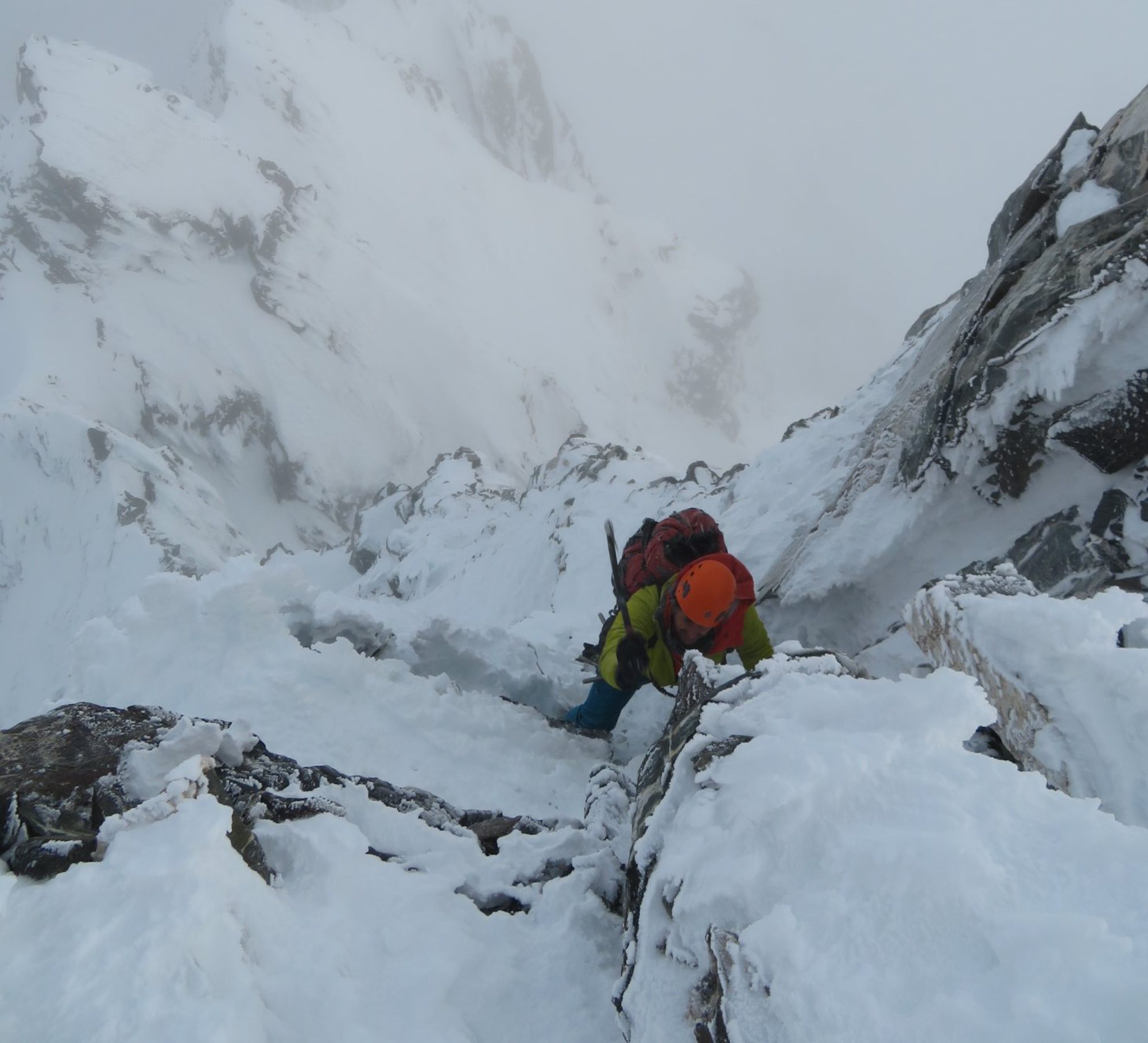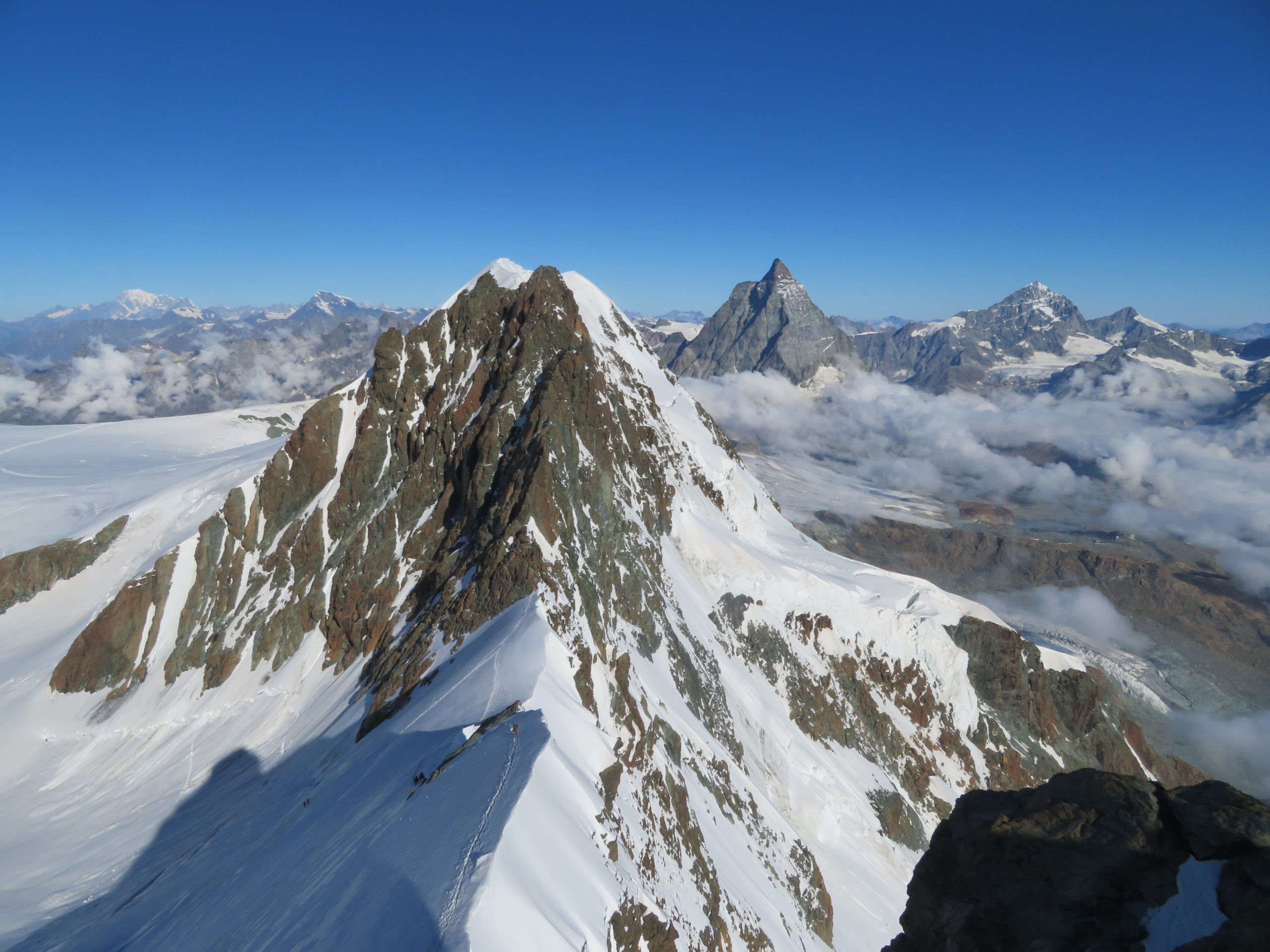In July 2022, I completed a traverse of the Breithorn ridge, one of the longest ridge traverses in the Alps. Passing over five 4000m summits in a few hours, the traverse (AD) provided spectacular views of the Monte Rosa massif and the summits surrounding Zermatt valley.
Day 1 – Approach to Lambronecca Rifugio
Beginning in Zermatt, we caught the huge gondola called ‘Matterhorn Express’ up past the Matterhorn and up onto the top of the ‘Matterhorn Glacier Paradise’. This lazy approach afforded excellent views of the ridgeline we intended to traverse the following day. To my dismay, it also gave a clear view of once mighty glaciers that are all but fading away into oblivion with climate change. This year saw record breaking summer temperatures, which followed a particularly dry winter. It was obvious to me that the glaciers in this place would not exist in the near future.


We put a minimum of gear on for crossing the glacier. We didn’t even bother putting on crampons, as the hot temperature and baking sun meant the snow was super slushy. We still had to take care crossing the glacier towards the Lambronecca Rifugio, as crevasses had opened up in locations which apparently locals had never seen before. The glacier crossing took about 2 hours. Crossing the border into Italy, the Lambronecca Rifugio had some of the best food I had tasted since coming to Europe. A full chef’s kitchen was pumping out delights such as handmade gnocchi con pesto and beautiful salads. The Italian’s sure know how to make better food than the Swiss! Bellissimo!

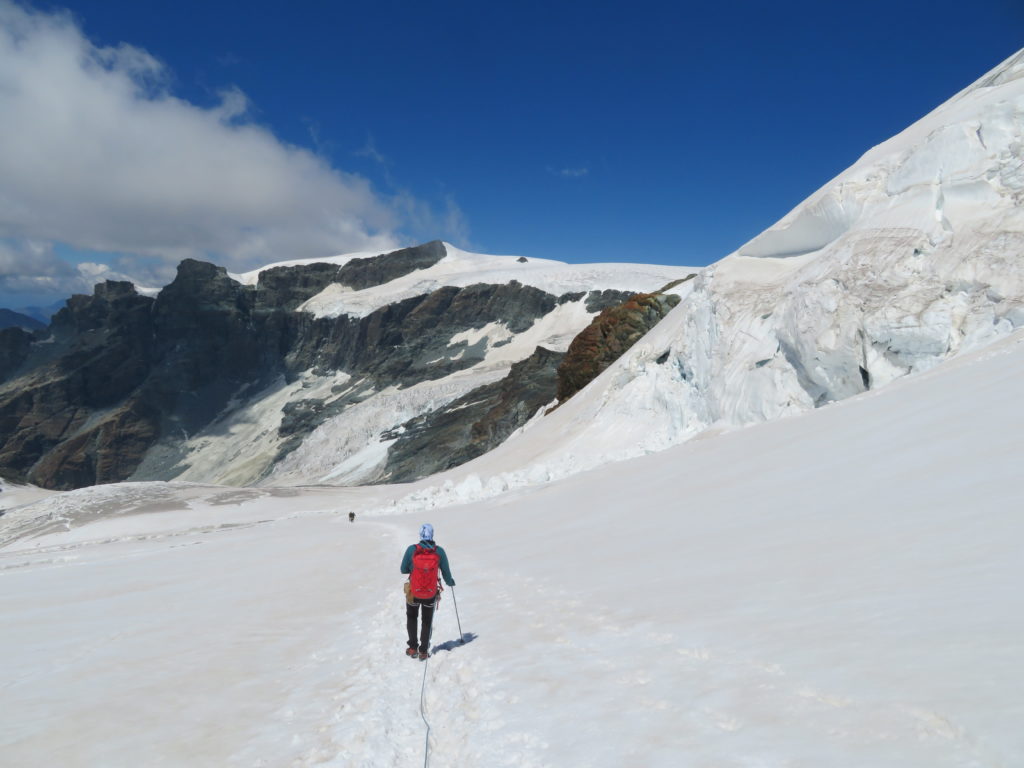
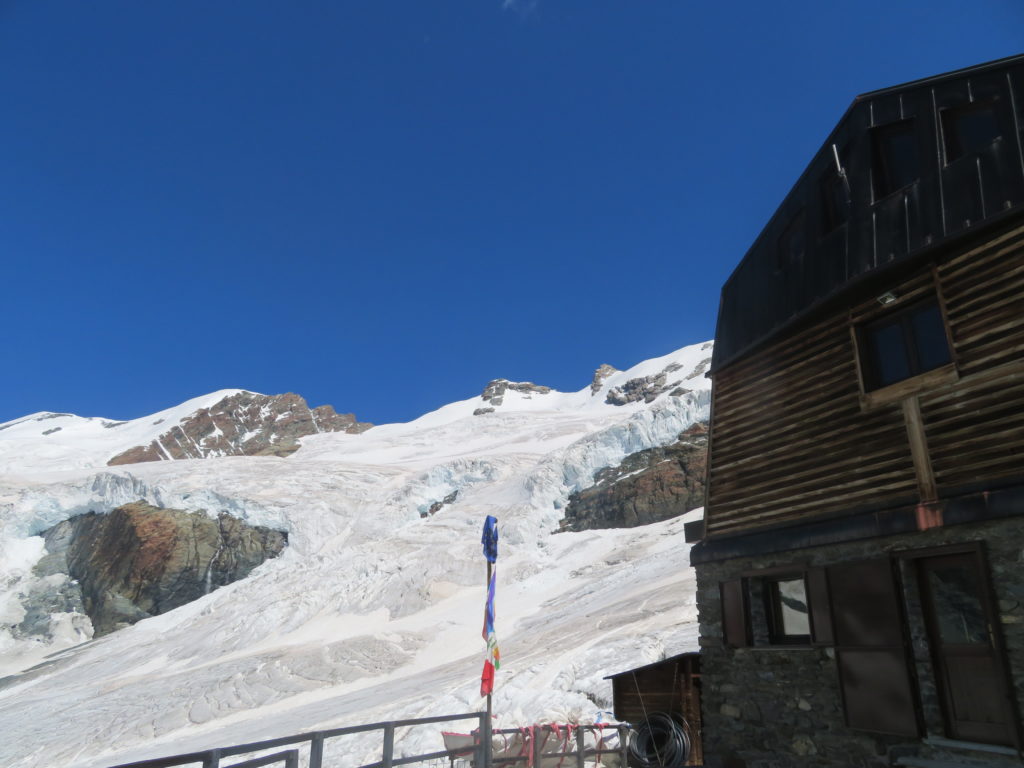
Day 2 – Breithorn Traverse
We awoke at 4am, departing the hut at 5am. It was probably unnecessary for an early start as the conditions were pretty favourable, however it was nice to get an alpine sunrise from the ridgeline.
We retraced our steps accross the glacier, back towards the Breithorn ridgeline. We ascended a steep snowslope to gain the Bivacco Rossi, a somewhat unnecessary bivouac which would have little utility this day and age. From here we climbed more steep snow to gain the Roccia Nera. From this point we were traversing the Breithorn ridge, which gave spectacular views of the Monte Rosa peaks.
We had 4 more peaks to overcome during our ridge traverse, however the vertical gain on each was relatively minimal with a total elevation gain of ~800m over the course of the day. It took us about 6 hours to return to the gondola station which had brought us up the previous day. There were two sections requiring short abseils, for which there were fixed anchors. Whilst exposed in sections, none of the climbing was particularly hard, and there were scores of other parties completing the same traverse.
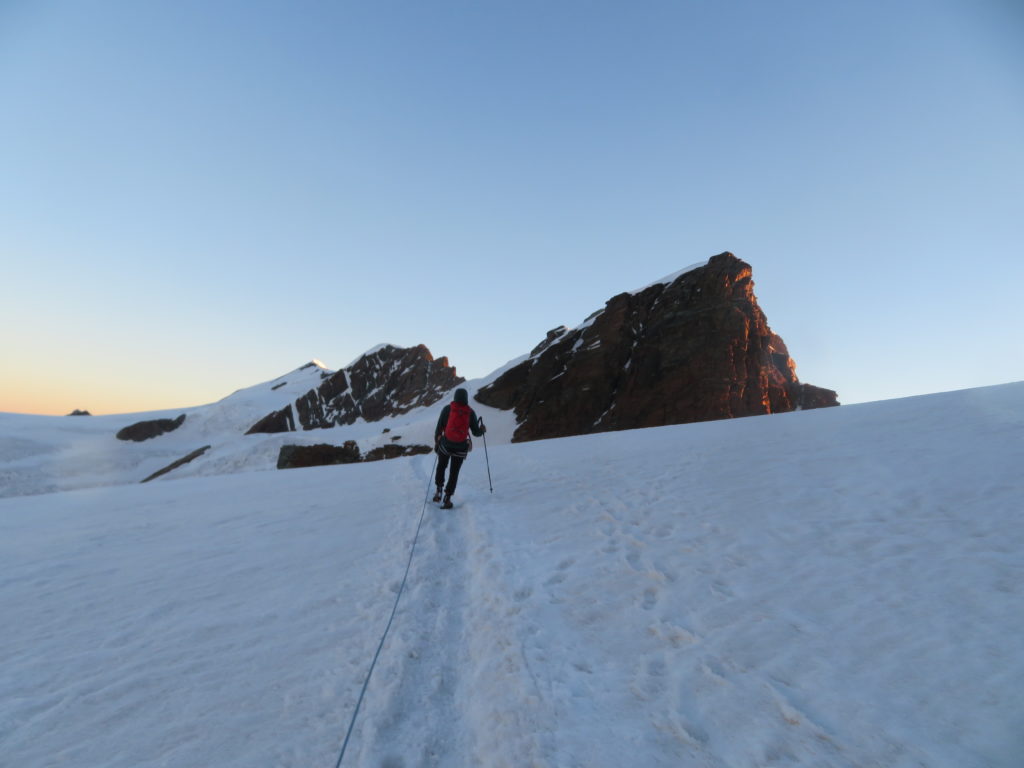
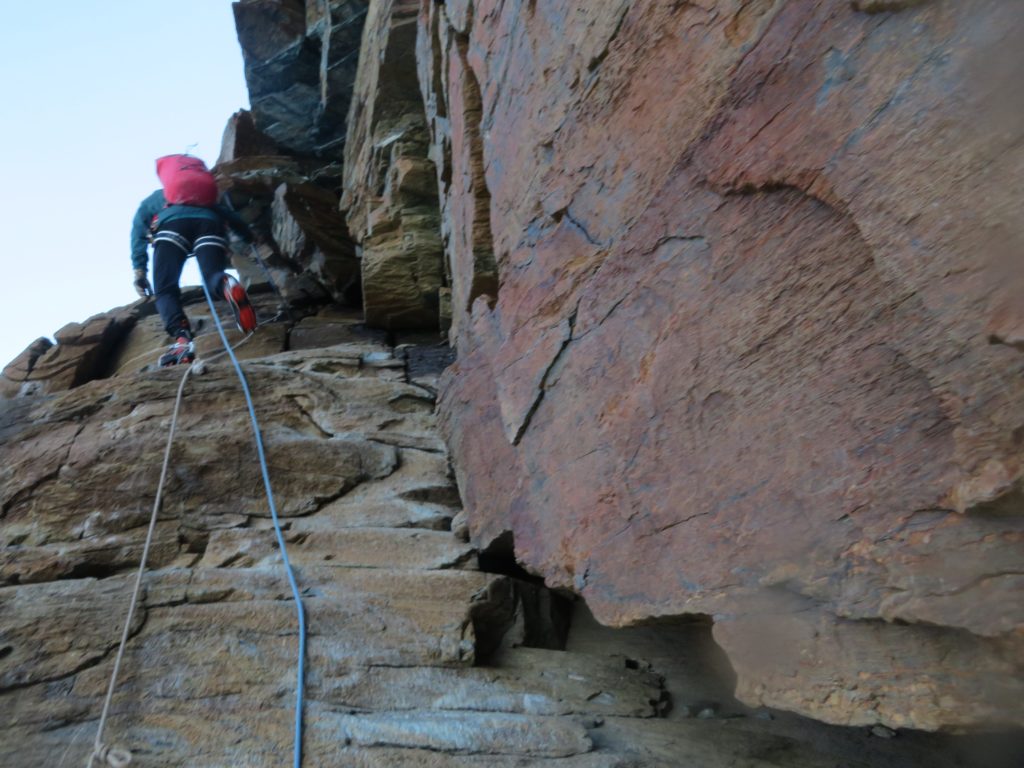

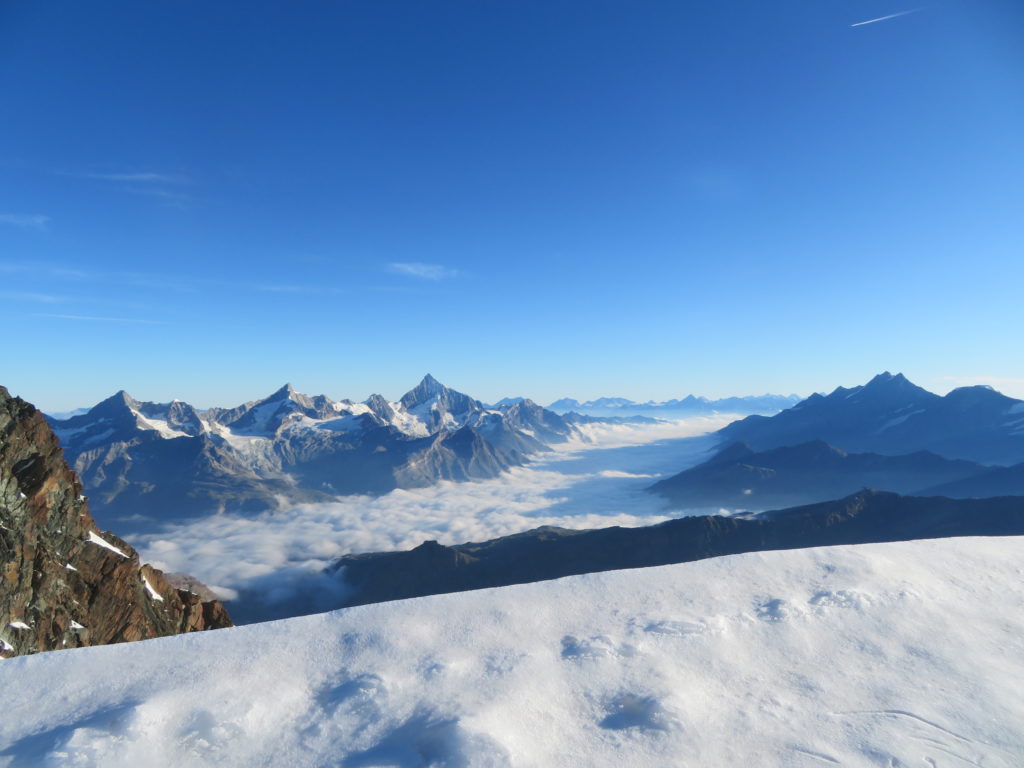
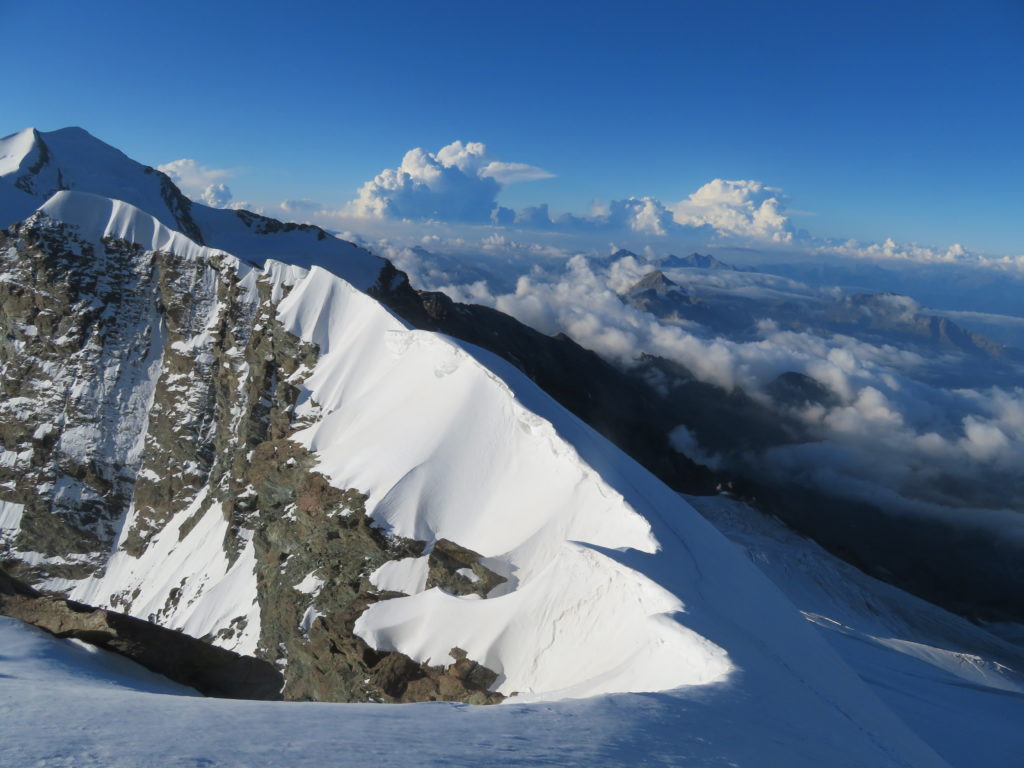
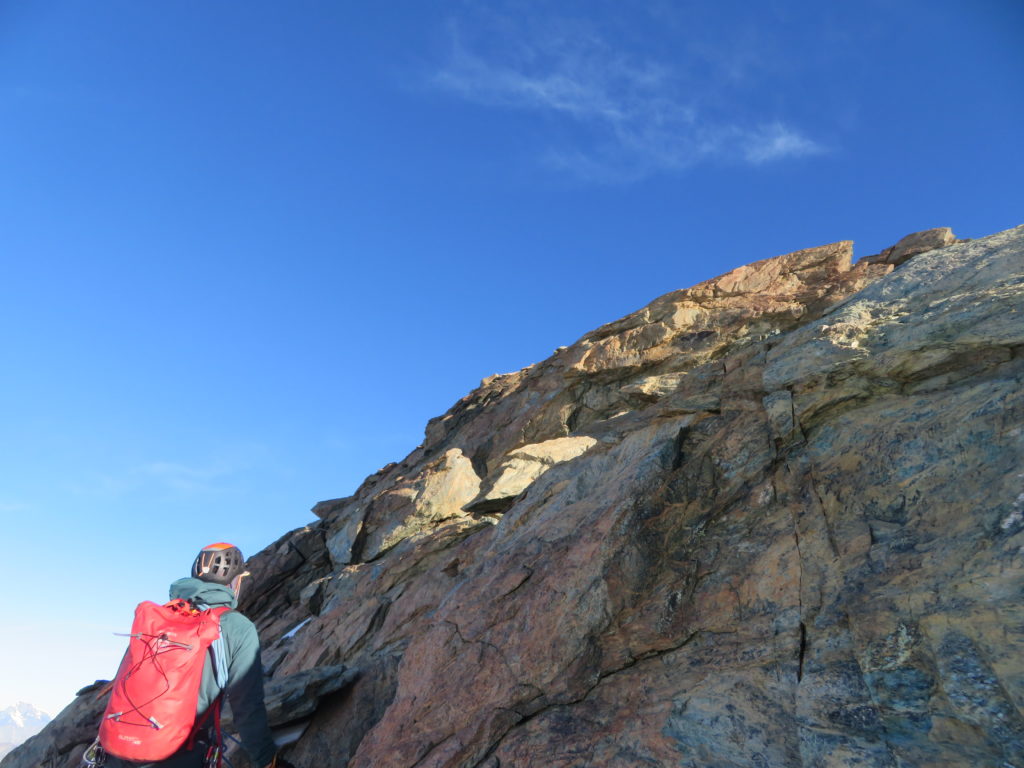

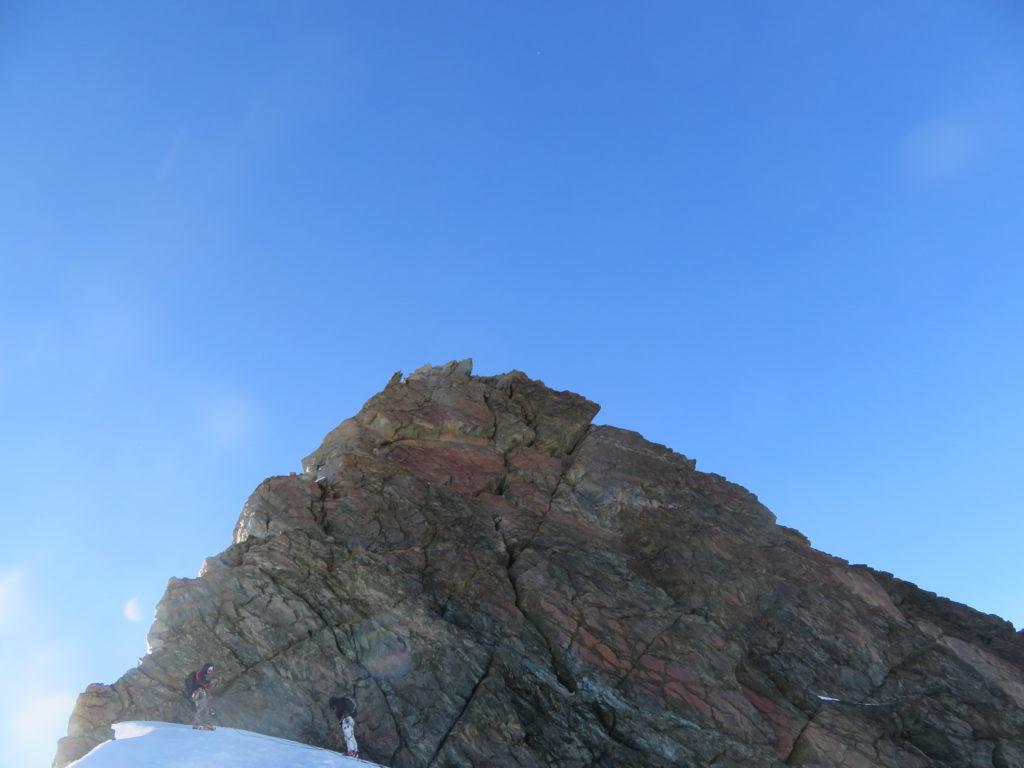
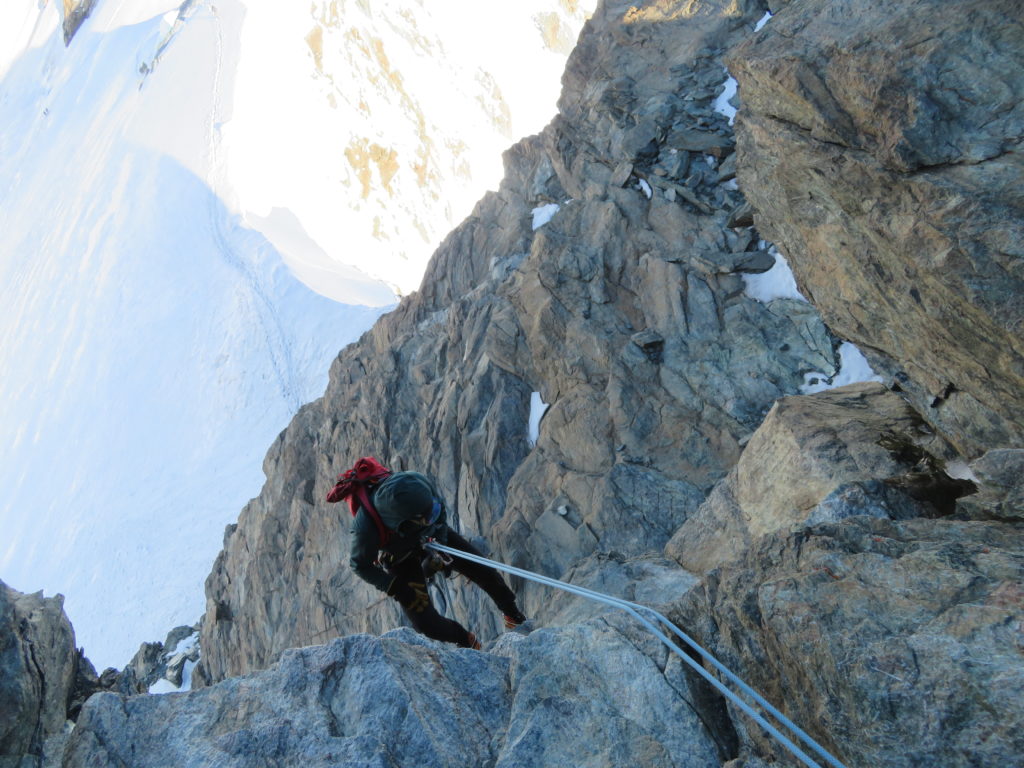

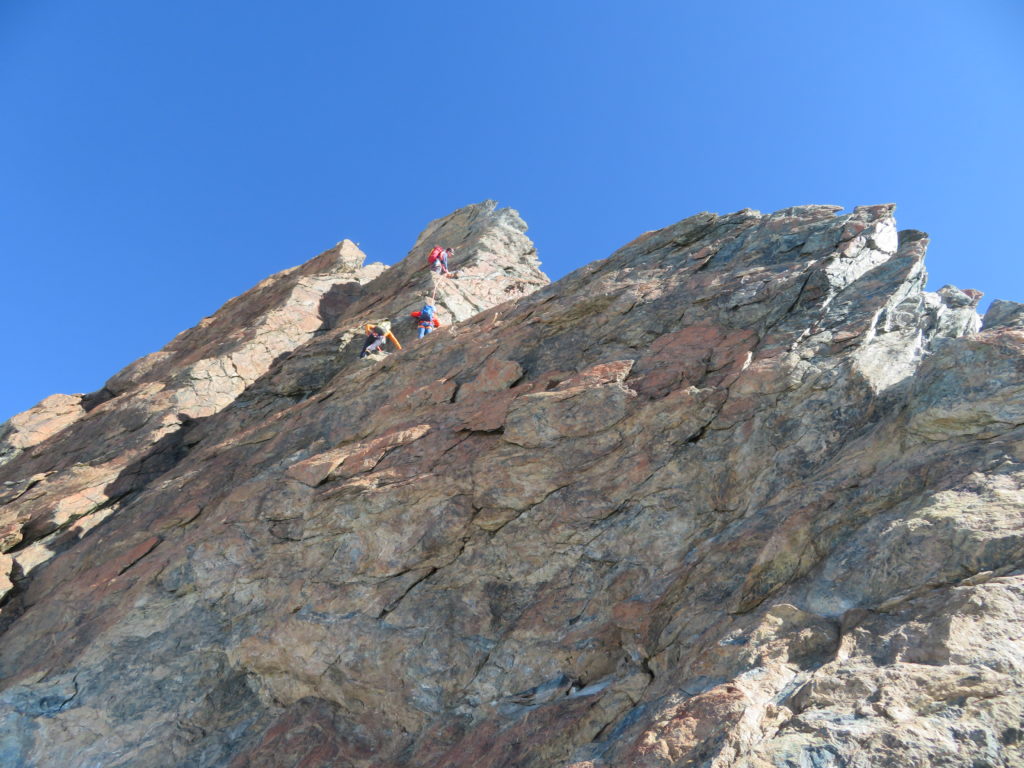
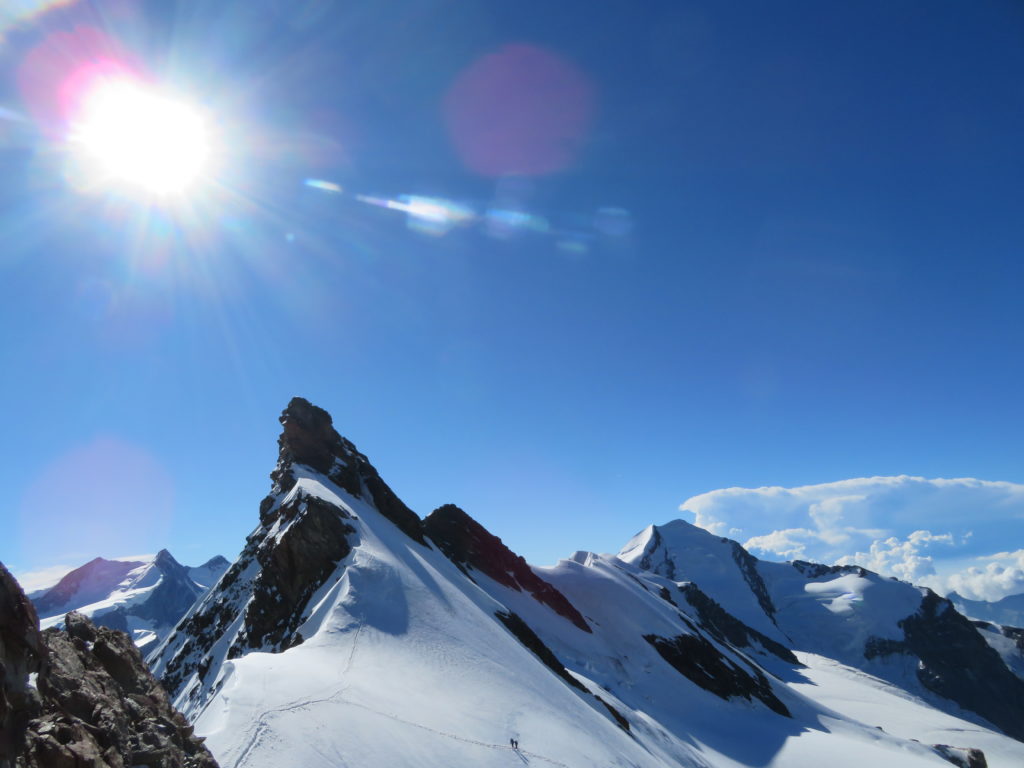
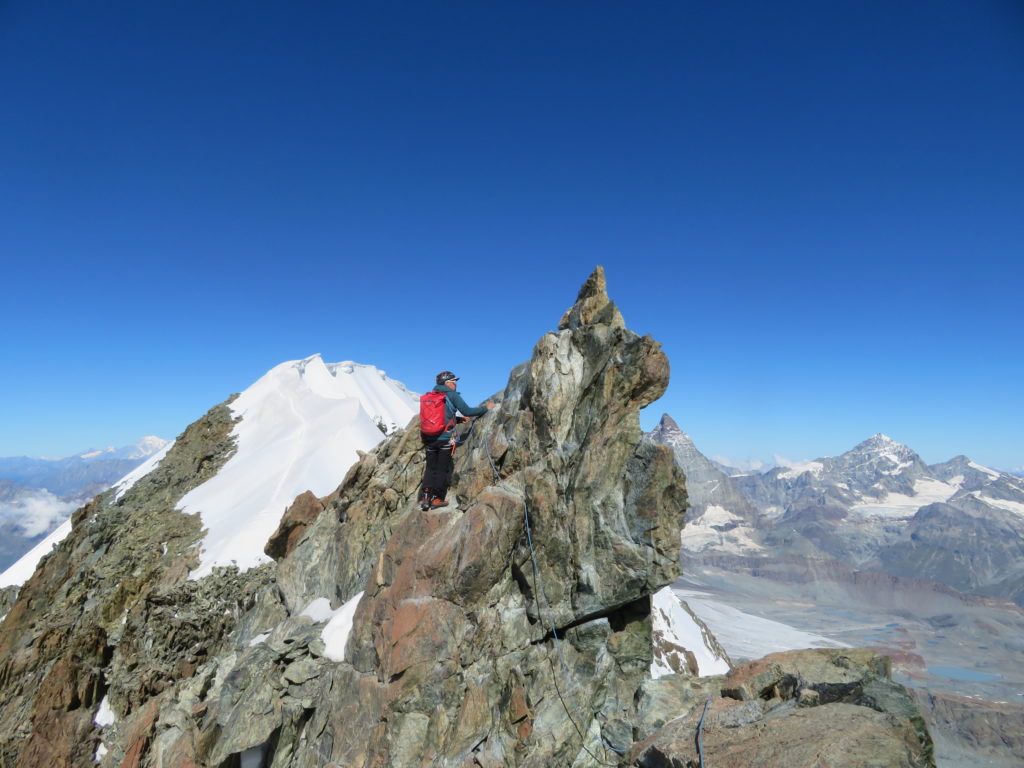
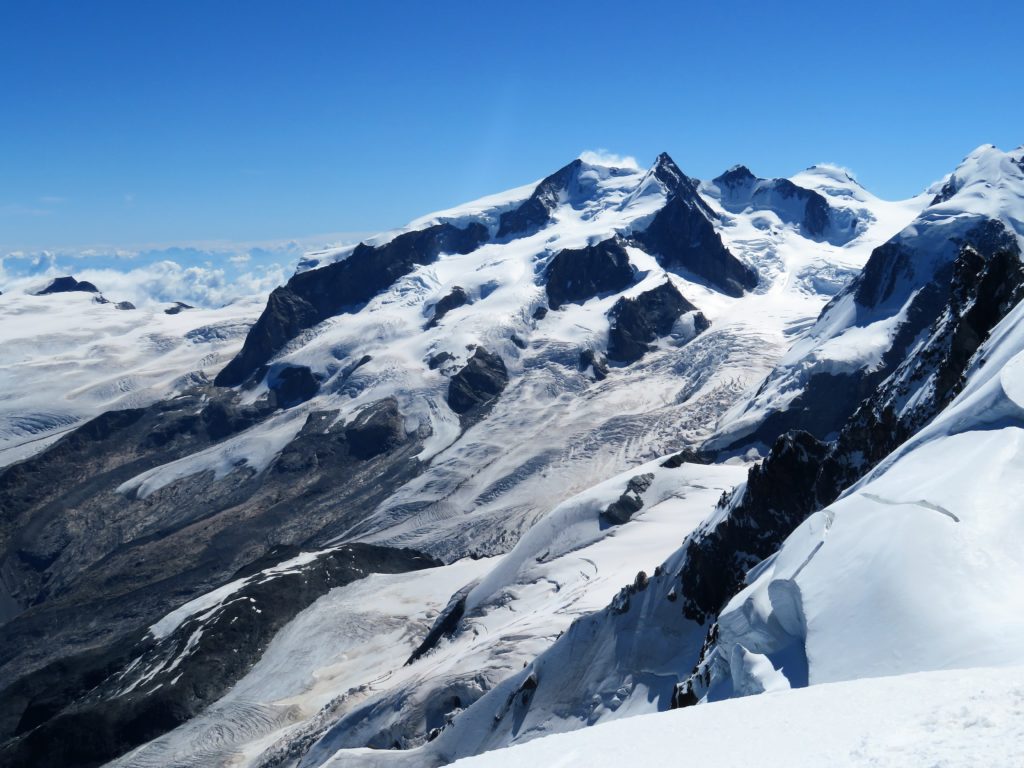
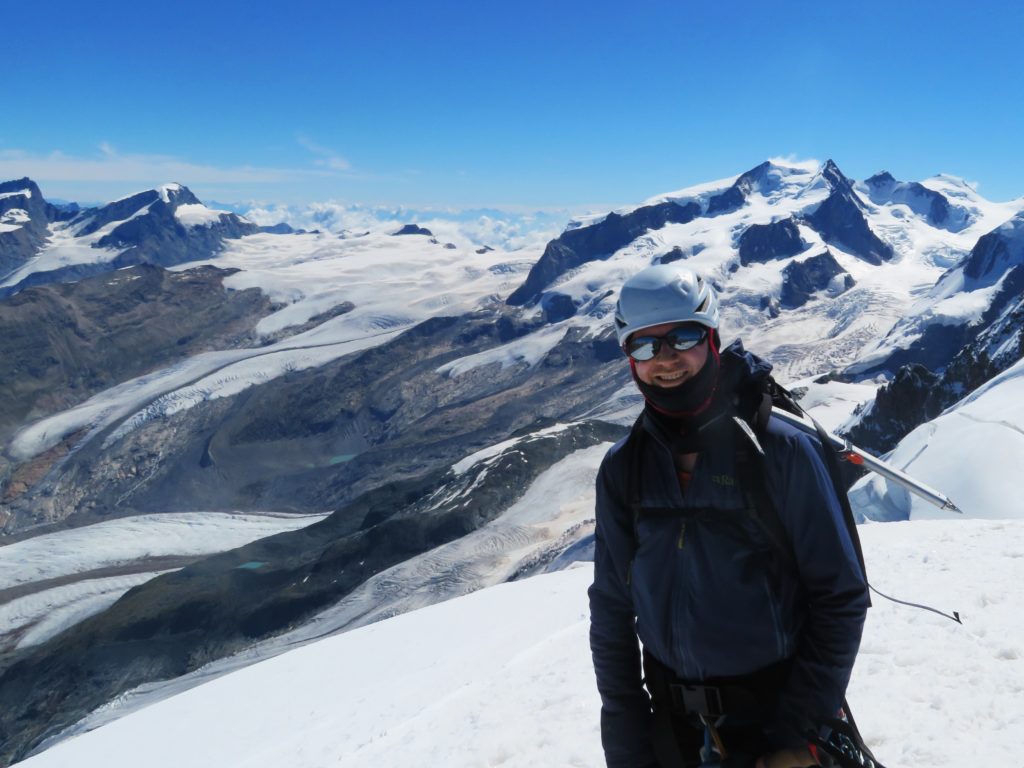
Overall, the Breithorn traverse is probably one of the easiest ways to bag some 4000m peaks in the European Alps. The gondola access and the huts do not make it a particularly strenuous affair. However, it is good value, and the views of the ‘roof of Europe’ i.e. the incredibly density of 4000m peaks surrounding the Zermatt valley, Mont Blanc and Gran Paradiso in the distance, make it worth doing if you’ve never been mountaineering in the Alps before.
